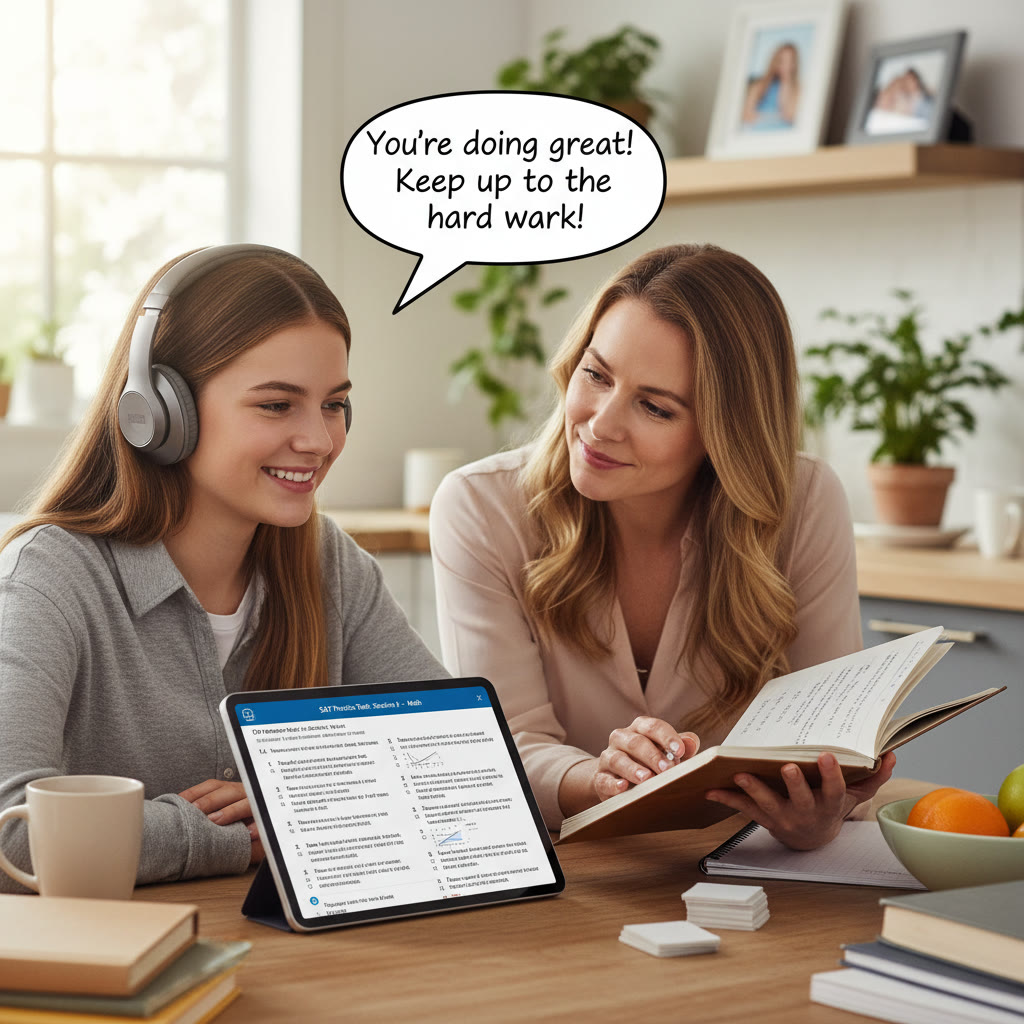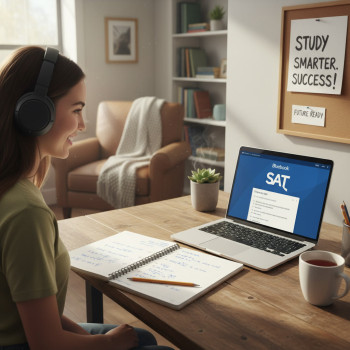Understanding the SAT and the University of Kansas: What You Need to Know
If you’re a student — or a parent helping a student — who’s planning to apply to the University of Kansas (KU), you’ve probably got a long list of questions: Do I need to submit SAT scores? What score will make my application competitive? How should I prepare for the Digital SAT? This guide walks you through KU’s approach to SATs in a clear, practical, and reassuring way. Think of it as the friendly roadmap you wished you had when you first started the process.

Quick answer: Does KU require SAT scores?
The short, practical answer is: KU considers SAT scores when they are submitted — but admissions policies about testing have been shifting nationally, and institutions often reassess whether scores are required, optional, or considered. For many applicants, especially those seeking scholarships or competitive programs, submitting a strong SAT score can still help. Always check KU’s official admissions pages for the most current stance before you submit; this guide explains how to interpret policies and make the best decision for your application.
Why SAT policy matters (and how to interpret “test-optional” vs. “test required”)
Here’s what the common terms mean in practice:
- Test-optional: You decide whether to submit SAT scores. If your scores strengthen your profile relative to GPA or extracurriculars, send them. If not, you can focus on other parts of your application.
- Test-blind: The university does not consider test scores at all, even if you send them. This is less common for large public universities but worth confirming.
- Test-required: The university expects scores from all (or many) applicants; omission can hurt your file or disqualify you for certain scholarships.
Understanding KU’s current label is step one; step two is knowing how scores are used by admissions, scholarships, and program placement.
What SAT scores does KU typically see from admitted students?
When reviewing applicants, universities often report an SAT range that reflects the middle 50% of enrolled students’ scores. At KU, that range can give you a realistic target for competitiveness.
| Measure | Typical Value / Range | Why it matters |
|---|---|---|
| Middle 50% SAT Range | Approximately 1090–1280 | Shows the score band where most admitted students fall — aim to be inside or above this range for strongest competitiveness. |
| Average Admitted Student Profile | Combination of GPA, course rigor, essays, recommendations | KU weighs the whole application; SAT is one piece of the puzzle. |
| Scholarship Consideration | Higher SATs may unlock merit scholarships or automatic award thresholds | Submitting a strong score can increase your access to merit-based aid. |
Note: These numbers are illustrative of recent profiles and are useful for planning. If your score sits below the middle 50% but you have strong grades, rigorous coursework, or compelling extras, your application can still be competitive.
How KU actually uses SAT scores
Universities like KU use test scores for multiple, practical purposes:
- Admissions evaluation: As one data point alongside GPA, coursework, essays, and activities.
- Scholarship eligibility: Many schools use score thresholds to fast-track merit awards or to triage scholarship pools.
- Placement and advising: Scores can inform course placement or readiness conversations in areas like math and writing.
- Holistic context: Scores help provide a standardized comparison across applicants from different high schools and backgrounds.
Should every applicant submit SAT scores?
Not necessarily. Use this decision checklist:
- If your SAT is within or above KU’s middle 50% range, submitting it is often helpful.
- If your test score is below your GPA’s implication (for example, high GPA but low SAT), and you can explain extenuating circumstances, weigh submitting carefully — a low score might not help.
- If you need scholarships tied to test thresholds, include your score.
- If the program you’re targeting explicitly requires scores, then submit.
Preparing for the Digital SAT: smart strategies that actually work
The SAT is now fully digital, which changes some logistics and strategies but not the fundamentals: practice, feedback, and strategy matter. Here’s a practical plan that balances studying with real-life schedules.
Timeline: six months to test day
- Months 6–4: Diagnostic test. Identify strengths and weaknesses; set a realistic target within KU’s middle 50% or higher if aiming for scholarships.
- Months 4–2: Build skills. Focus on content gaps, timed sections, and digital navigation skills (on-screen marking, scrolling, answer switching).
- Months 2–1: Practice tests under full digital conditions and simulate test-day timing.
- Final month: Targeted review, question types that trip you up, light practice in final week to keep sharp.
Study mix: quality over quantity
Practice doesn’t equal progress unless it’s focused. A strong routine mixes:
- Full-length digital practice tests (to build stamina and timing).
- Short, focused practice sessions on weak skills (25–45 minutes).
- Review sessions that explain the reasoning behind every mistake (this is high-leverage).
- Periodic score checks to measure growth and adjust the plan.
How technology changes test prep
Because the SAT is digital, students should get comfortable with:
- Reading on a screen for long stretches without losing focus.
- Using digital tools like highlighting, flagging questions, and navigation between passages.
- Typing responses if any part of the test requires typed input (practice composing clearly under time pressure).

Practical tips for test day and score reporting
On test day, logistics matter almost as much as content mastery. Here are pragmatic reminders that reduce stress and prevent small issues from ballooning:
- Know the check-in procedures, ID requirements, and device rules for the digital SAT administration you’re taking.
- Bring a printed schedule and confirmation; confirm start time and testing location the evening before.
- Sleep and nutrition — a solid night’s sleep and a balanced breakfast beat cramming any day.
- Practice using the exact hardware (tablet/laptop) and software interface if possible; familiarity removes friction.
Sending scores to KU
When you decide to send scores, consider the following:
- Timing: Send a score that represents your best performance and arrives before KU’s scholarship or application deadlines.
- Superscoring: Some schools superscore (combine section scores from multiple test dates) and some do not; check KU’s current policy to see how they treat multiple submissions.
- Selective reporting: If KU is test-optional and you’ve taken the SAT multiple times, you can choose which scores to send. Send the ones that strengthen your application.
How to set a target SAT score for KU (and why targets matter)
Targets focus effort. Instead of aiming vaguely to “do better,” pick a numerical target anchored to KU’s profile and your personal goals.
- Minimum practical target: get within KU’s middle 50% range (around 1090–1280). For many applicants, reaching the upper half of this range makes a difference.
- Competitive target: aim for the top end of the range or above — especially if seeking scholarships or competitive majors.
- Stretch target: add 50–100 points above the competitive target to create a buffer for test-day variability.
Set a date for the test that aligns with your senior year timeline and scholarship deadlines. A concrete deadline sharpens your study plan.
Examples: How different applicant profiles might use the SAT
Real-world scenarios can help you decide whether to submit scores and how much prep is worth the investment.
- High GPA, moderate extracurriculars, SAT within range: Submit your score to reinforce your academic profile.
- High GPA, low SAT: Consider focused test prep to raise the score or weigh submitting only if other parts of your application are stellar.
- Average GPA, strong SAT: Submitting can significantly strengthen your candidacy; highlight test performance alongside growth in coursework.
- Scholarship-seeker: Aim for the upper range or above; scholarship committees often use thresholds.
How tutoring and personalized help speed progress — where Sparkl fits
Many students benefit from targeted, personalized support. That’s where individualized tutoring — like the kind Sparkl offers — becomes valuable. Personalized tutoring can give you:
- 1-on-1 guidance to target your specific weaknesses and accelerate improvement.
- Tailored study plans that fit your schedule and slice practice into manageable, high-impact sessions.
- Expert tutors who can explain tricky concepts, model test strategy, and coach test-day confidence.
- AI-driven insights that track your progress and suggest where to focus next, saving time and improving efficiency.
For many families, working with a tutor shortens the timeline to a desired score and makes studying feel far less overwhelming. If you prefer self-study, combine official digital practice tests with focused review; if you want faster, targeted growth, personalized tutoring is a strong option.
Common mistakes students make (and how to avoid them)
Being aware of common pitfalls helps you prepare smarter:
- Studying randomly: A scattershot approach burns time. Use diagnostics to pick high-leverage skills to practice.
- Ignoring the digital interface: Practicing only on paper won’t prepare you for the navigation or pacing of the Digital SAT.
- Not simulating test-day conditions: Realistic practice tests build stamina and reveal timing blind spots.
- Forgetting deadlines: Scholarship and application windows matter more than one-off score improvements.
Using your full application to tell your story
KU wants to admit students who will thrive on campus and contribute to the community. Think of the SAT as one tool that helps showcase your readiness. Balance its role with other parts of your narrative:
- Course rigor and GPA: Colleges like to see you challenged yourself.
- Essays and personal statements: Use them to explain growth, demonstrate character, and add context around test scores.
- Activities and leadership: Show sustained commitment and impact.
- Recommendations: Choose recommenders who know your academic habits and contributions.
Checklist: 10 practical next steps for KU applicants
- Confirm KU’s current SAT policy on KU’s official admissions page.
- Take a diagnostic digital SAT to set a realistic target score.
- Create a study calendar backwards from your chosen test date.
- Plan at least 4–6 full-length digital practice tests across your prep timeline.
- Decide whether to use private tutoring, self-study, or a hybrid approach; consider targeted 1-on-1 sessions for top efficiency.
- Practice the test interface so navigating the digital format becomes second nature.
- Keep a file of achievements and highlight items you’ll use in essays.
- Track scholarship deadlines and the score thresholds they require.
- Have a test-day plan: ID, arrival logistics, technology checks, sleep, and nutrition.
- After each practice test, do detailed error analysis — that’s where most score gains come from.
Final thoughts: Make choices that fit your story
The SAT is an important tool, but it’s only one of many ways to show readiness for KU. Whether you choose to submit scores, retake the test, or focus on other application elements, your strategy should reflect your strengths, goals, and the timelines you’re working with. If you want a faster, more certain path to score improvement, personalized options such as 1-on-1 tutoring, tailored study plans, and AI-driven diagnostics (the kind offered by Sparkl) can make preparation more efficient and less stressful.
Above all, remember this: admissions officers at KU are reading your whole application. A thoughtful, well-rounded application that shows curiosity, commitment, and clear preparation — alongside an SAT score that reflects your effort — is what will make your candidacy resonate.
Resource notes and next actions
Before you act, do two quick things:
- Check the University of Kansas admissions page to confirm the current SAT policy and any program-specific requirements or scholarship thresholds.
- Set one clear, immediate task for the next week (take a diagnostic digital SAT, book a practice test, or draft a study calendar).
Good luck — and remember, steady, focused progress beats last-minute panic. With a clear target, a realistic plan, and the right support, KU can move from “possible” to “very achievable.”
If you’d like help building a personalized study plan or want to explore 1-on-1 tutoring that focuses on the Digital SAT and KU’s requirements, consider reaching out to a trusted tutoring provider who offers tailored guidance, expert tutors, and AI-driven insights to maximize practice time and outcomes.


















No Comments
Leave a comment Cancel